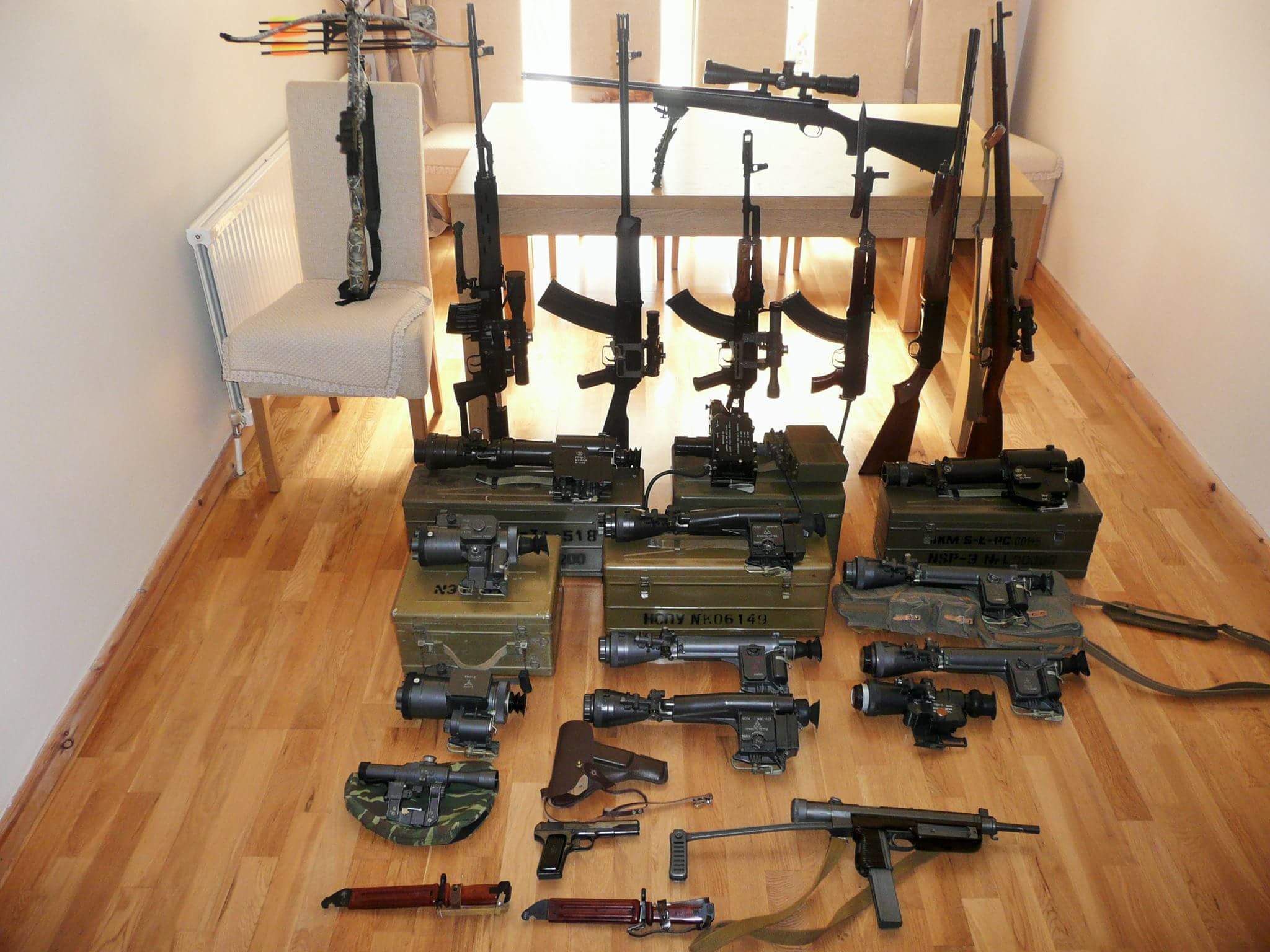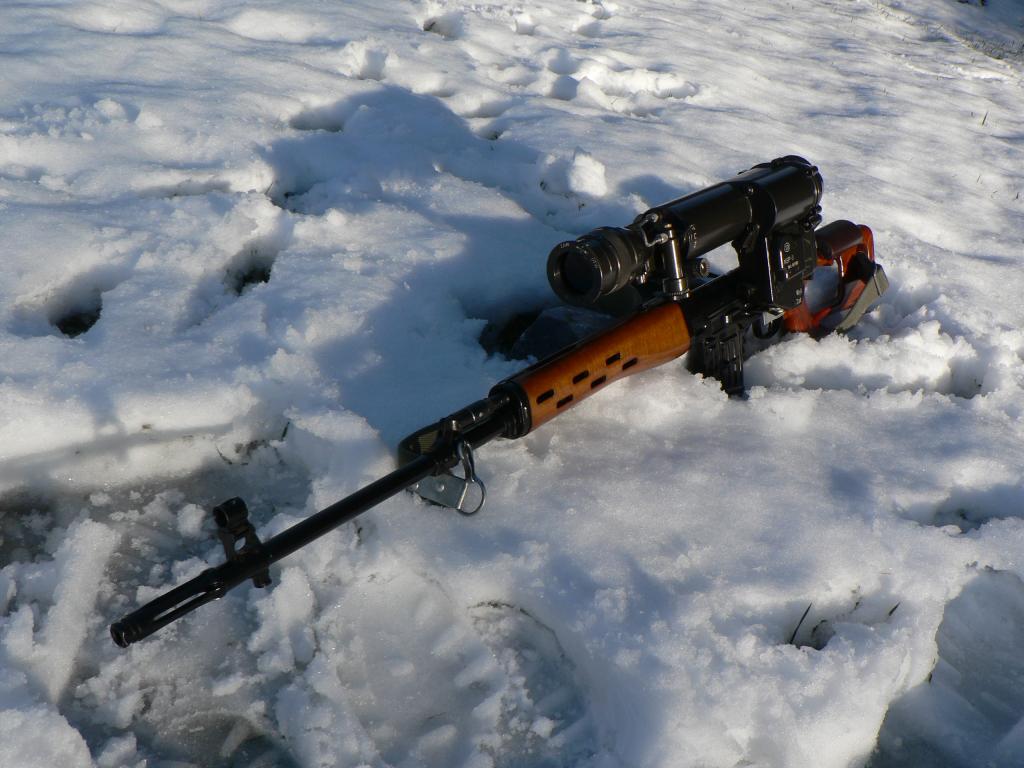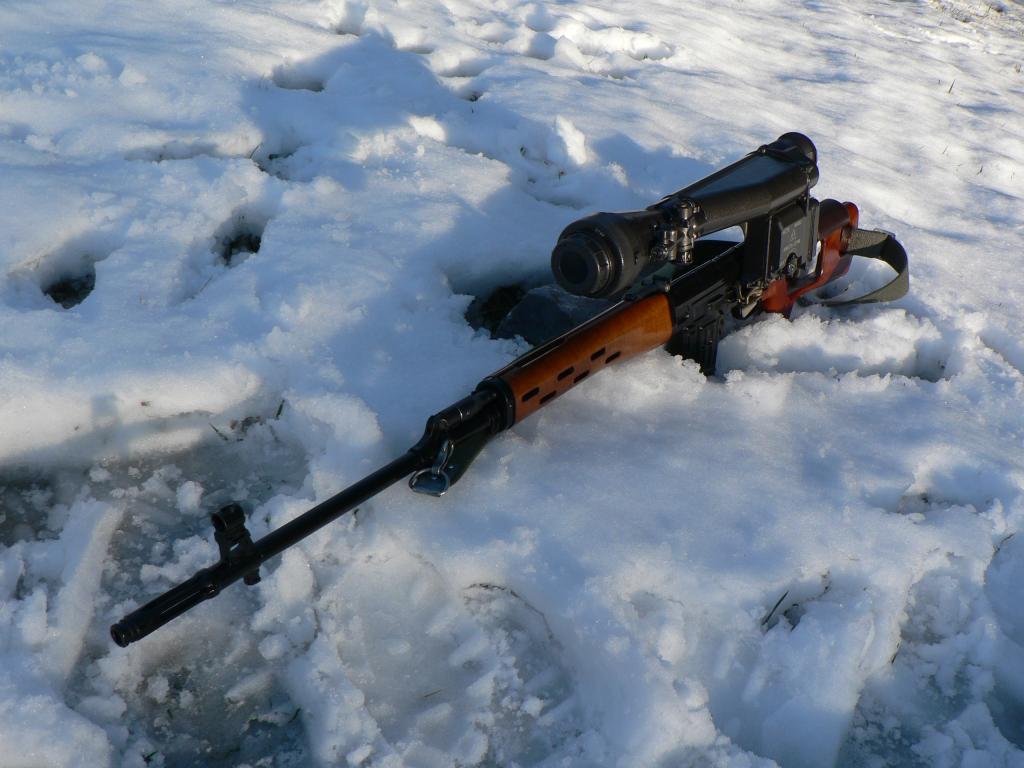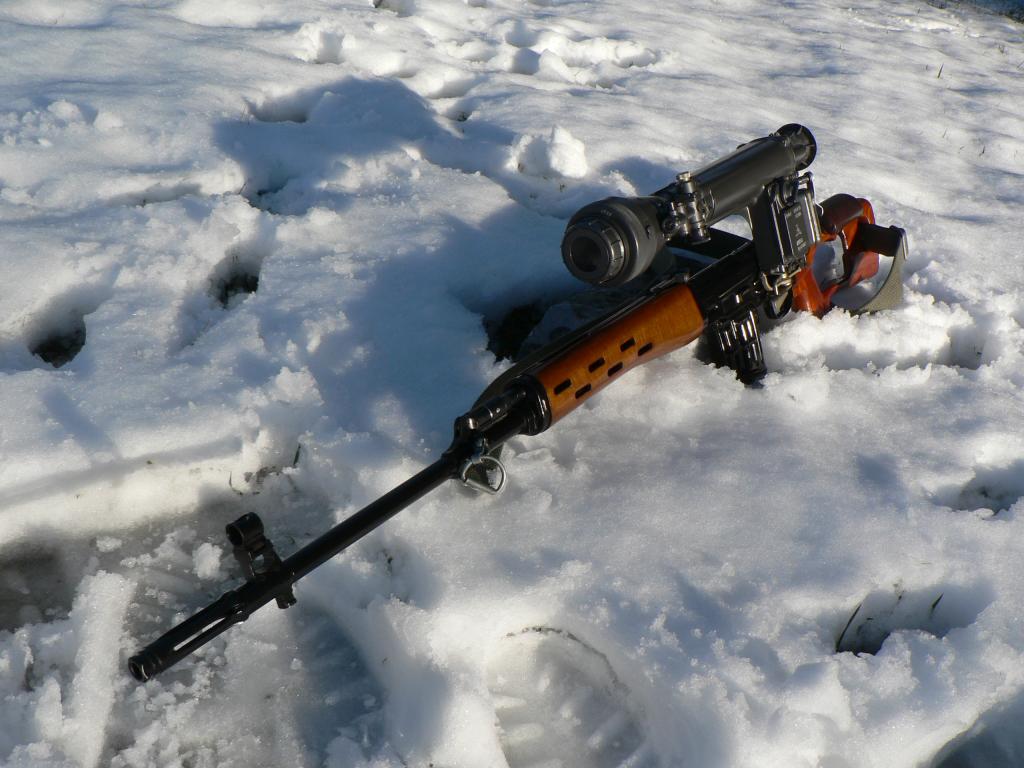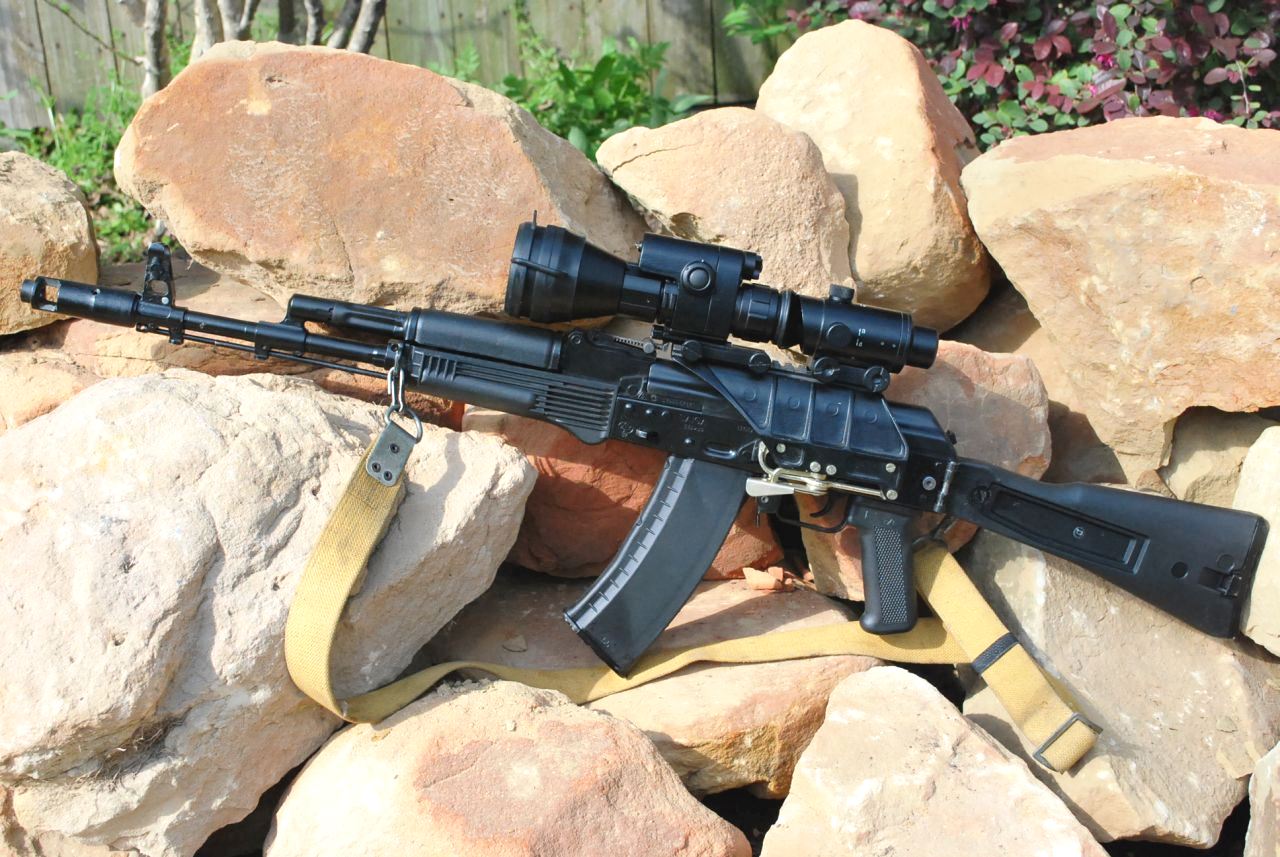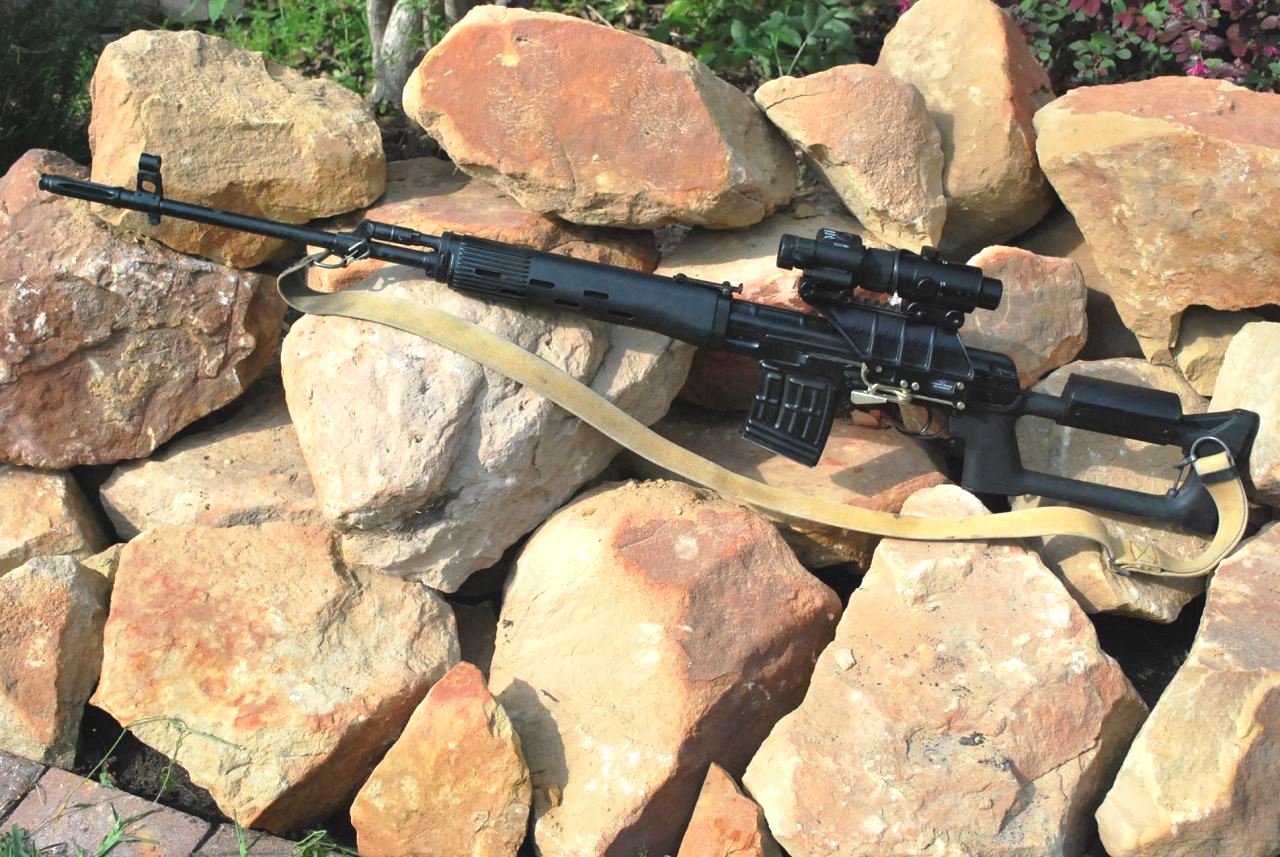 The soviets have a long
history of night vision equipment produced during the
cold war. While they often seem large and unwieldy
looking it should be remembered that during the
cold war most types of night vision gear from all
countries were large and bulky.
The soviets have a long
history of night vision equipment produced during the
cold war. While they often seem large and unwieldy
looking it should be remembered that during the
cold war most types of night vision gear from all
countries were large and bulky.
Unfortunately we cannot get the most modern
Russian night vision optics here in the US due to
military export laws but I will show a few examples of
modern and former Soviet designs.
Update 2017: I have recently acquired a few very
modern optics as well as an older 1PN51, and have
updated the pages accordingly.
Left to Right - 1PN34, 1PN58, 1PN51, 1PN93, 1PN93-1,
1PN114
My UK friend and owner of Kalashnikov.org.uk
recently sent me a photo of his collection. Quite
impressive and includes an ultra rare 1PN51-2 (shown
on the 1PN51 page)
If you ever run into trouble with your Russian NV
send him an email and he might be able to fix it
Update
Brian Wilhelm of theakforum.net has done an
excellent overview of the evolution of cold war Soviet
night vision devices and with his gracious permission
I have reposted it here to help round out content that
I have not been able to add to the site. He has an
extensive and impressive collection of night vision
gear and I am proud to show it off here. Look for his
upcoming book on the subject hopefully in the near
future.
***
Brian Wilhelm:
NSP-2
This particular unit was Czech assembled and made
in the early 60's. Some of the parts exhibit Cyrillic
writing on them but some of them have Czech inspection
stamps too. Most probably, all of the Warsaw Pact
countries that built NV units used a fair amount of
parts imported from the Soviet Union. Notice that it
has a 35w infrared projector mounted on top of it
because these early units were incapable of light
intensification. The box laying in the snow beside the
rifle is the 6v power pack. It hangs on your belt and
supplies power through the black wire seen running up
to the scope. You were literally tethered to your
rifle! At the time, it was cutting edge technology.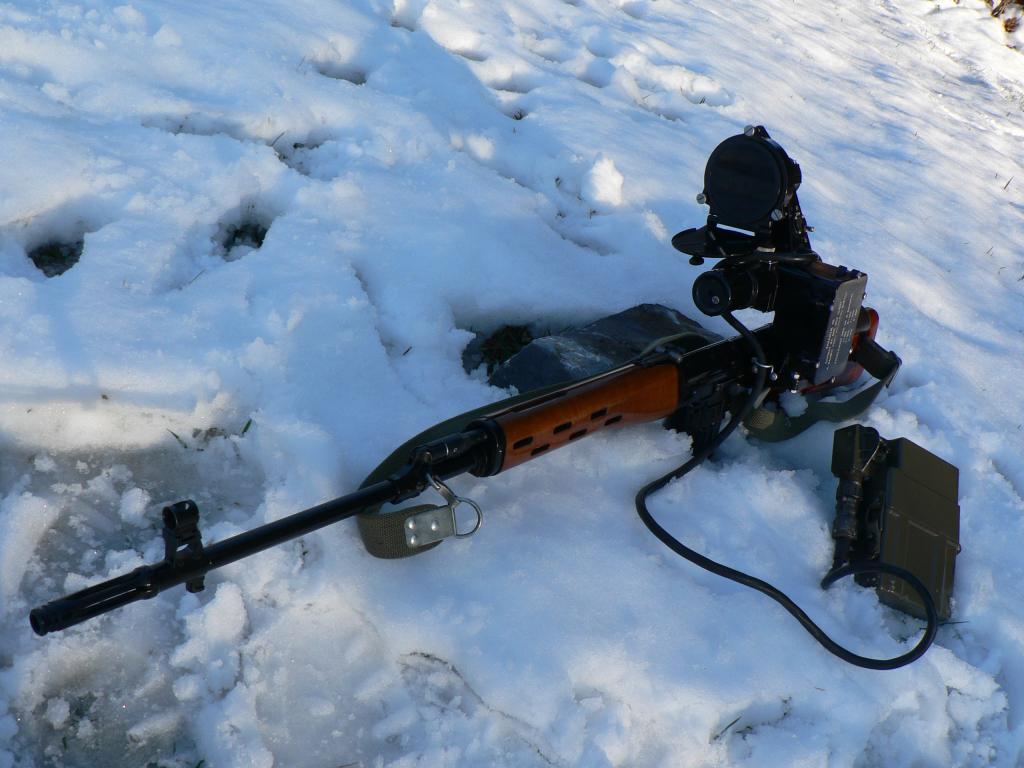
This particular unit was made in Poland in the early 80's. The late date of manufacture is surprising given that it was woefully obsolete at that point. Compared to its predecessor, the NSP-3 was a HUGE jump in technology because it was capable of amplifying ambient light so no infrared projector was required. This lightened the scope and eliminated the need for a large bulky battery but the main advantage was the fact that, because you no longer needed to beam infrared light out for the unit to work, you could observe without being seen by another NV device. Like the NSP-2, this scope had to be used VERY carefully around bright light sources because the unsophisticated electronics provided no protection so the main tube could be easily damaged or rendered inoperative by overly bright light.
1PN34
(NSPU)
This unit was made in the USSR in the early 80's.
Essentially an improved NSP-2, then 1PN34 had
circuitry built into it that would shut the unit down
temporarily should too much light enter the objective
lens, thus protecting the intensifier tube. Still, it
could be easily damaged if subjected to too much
light. Lighter and more user friendly than the NSP-3,
the 1PN34, like all Soviet Gen 1 units, exhibits a
fair amount of distortion as you move out from the
center of the image. This is referred to as "fisheye".
If you've ever looked through one of those peephole
lenses mounted in the door of a hotel room, you know
what fisheye is. While it can be distracting at first,
you quickly become accustomed to it and it ceases to
be a significant problem.
1PN58
(NSPU-M)
Shown is a Russian built unit made in 1992 but it was
designed and widely issued before the fall of the
USSR. At first glance, it appears to be identical to
the 1PN34 but there are significant differences in
weight, electronics and image quality. The electronics
are simpler and more compact so the body of the unit
could be more compact as well resulting in reduced
weight. The image exhibits less fisheye and the power
source was more user friendly too. Where the 1PN34
used a liquid filled battery, the 1PN58 used a more
reliable stack of solid cell batteries each akin to a
greatly enlarged button cell. Additionally, the light
source for the reticle was changed from a conventional
incandescent bulb to a much more reliable and longer
lasting lasting LED.
1PN34 (top) and 1PN58
1PN51
The last night vision device for rifles fielded by
the USSR, the 1PN51 was introduced in the late 80's
and was another quantum leap forward in Soviet NV
technology. The unit shown was made in 1992 and it is
still in general use today with Russian forces. A Gen
2 unit, the 1PN51 was an entirely new and compact
design employing very sophisticated electronics for
its time. Among other things, it utilized a single
stage long life intensifier tube that entirely
eliminated fisheye, was far more light sensitive than
earlier units and featured the ability to self
compensate for varying light levels entering the
objective lens.
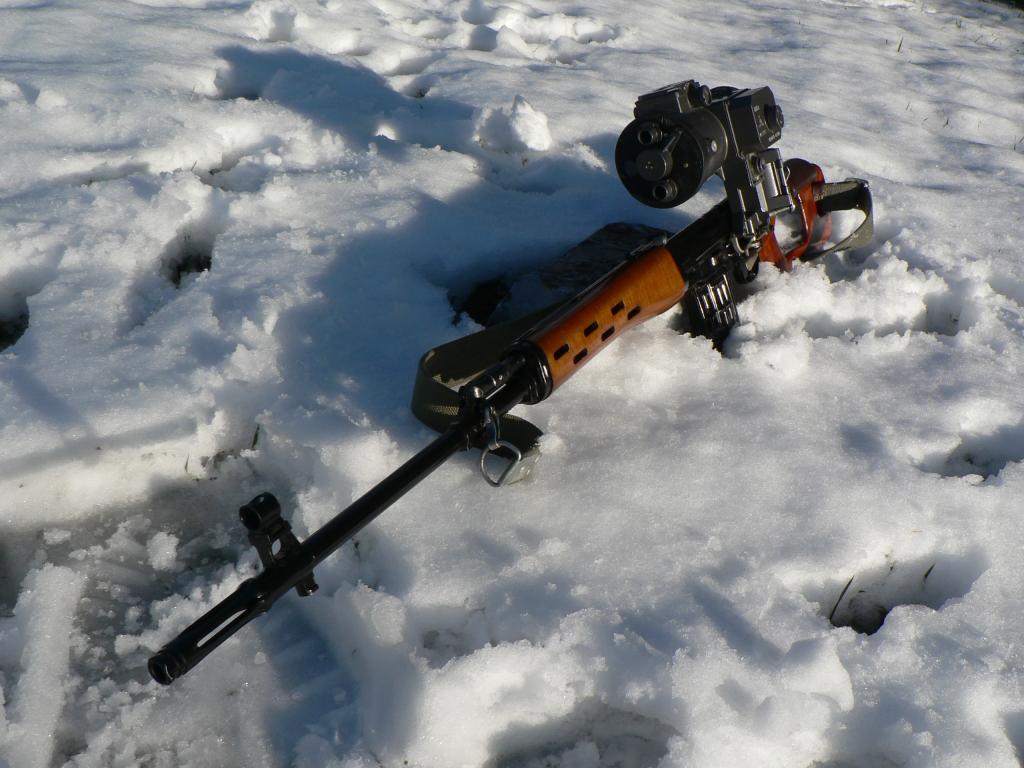
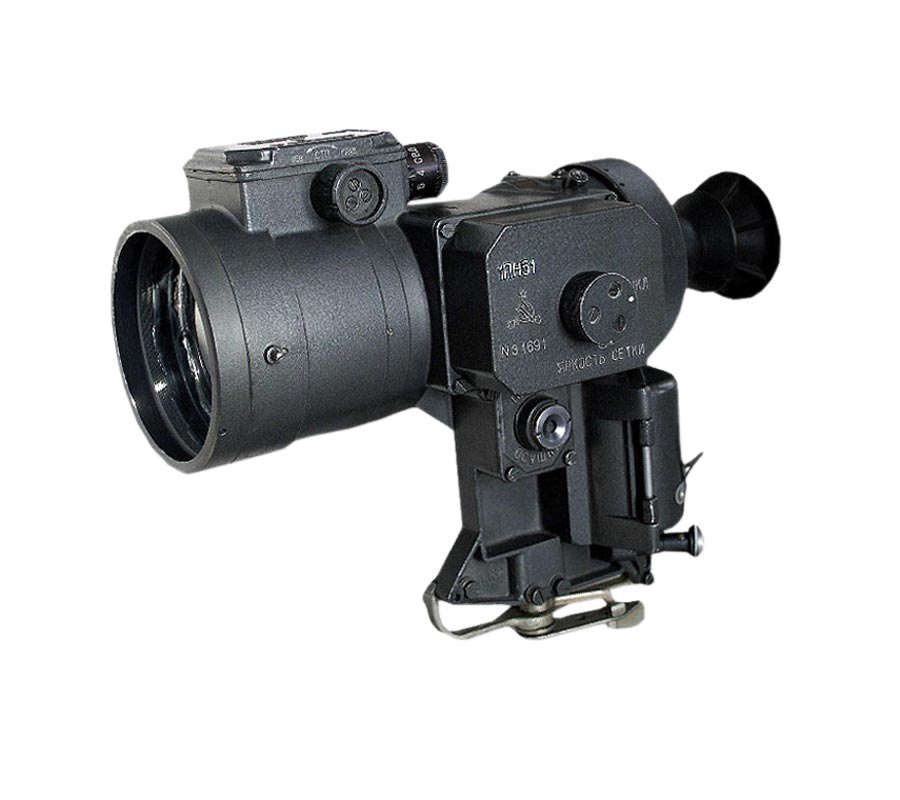
"The book I'm working on will feature an in
depth look at each of these units along with their
storage/transit boxes and various accessories
included with each. I'll also discuss adjustments
and operation of each too. I look forward to writing
it and I hope you all look forward to reading it!"
Brian Wilhelm, theakforum.net
***
The Soviets and modern Russians continued to improve and design new night vision optics. Again while we can't get many of them here in the US there are a few reference sites out there.
Modern NPZ night vision optics HERE
on NPZ's website, including 1PN114 and 1PN93
The very modern PN16 and PN21:
PN16K-3 monocular and Rakurs-PM on NPZ universal AK mount, shown on SGL31
PN21K monocular with Rakurs-PM again on NPZ universal rail
